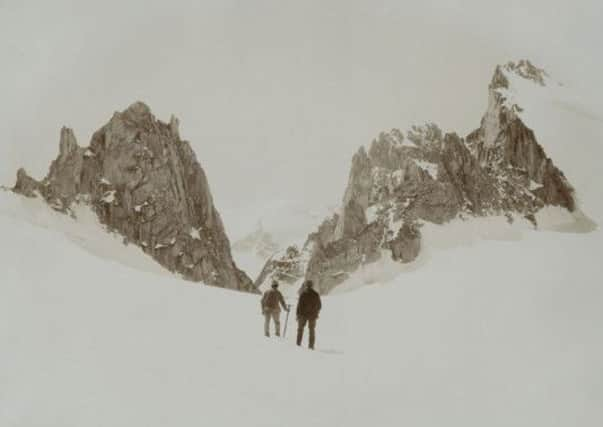Roger Cox: The Genius of Vittorio Sella


Prior’s Karakoram Project still has a couple more years to run, and there’s a book and an exhibition planned for 2018, at which point Sella will no doubt be catapulted back into the public consciousness once again. In the meantime, fans are in luck, because the Fondazione has just published a fittingly monumental book of Sella’s photographs, taking in the full sweep of his remarkable career.
Vittorio Sella: Mountain Photographs 1879-1909 follows Sella from his early forays into the Alps, through his expeditions to the Central Caucasus, Alaska and the Rwenzori chain in the heart of Africa, culminating in his Karakoram expedition of 1909, which arguably led to the creation of his most accomplished and arresting work.
Advertisement
Hide AdAdvertisement
Hide AdOne of the most remarkable things about Sella’s photographs is the sheer physical effort that went into making them. Some of the larger high-definition glass plates he used measured 30cmx40cm and weighed 900 grammes a pop, and his camera set-up was approximately as heavy and as cumbersome as a bicycle rickshaw. In spite of these handicaps, however, he was able to produce images of a clarity and an aesthetic brilliance that are still unmatched more than a hundred years on. As Prior observed in an interview in these pages last year, in reference to Sella’s pictures of the Karakoram, “these images were shot back in 1909, but some of them are the defining images of the Karakoram. There was something about the way he captured them that remains unique to this day.”
Recognising the genius of Sella’s photographs is one thing, but describing that genius and pinpointing where it came from is another matter entirely. There’s one very telling passage, however, in the introduction to the new Sella book written by his daughter Angelica Sella, director of the Fondazione Sella, that perhaps offers an explanation.
“What makes his work unique and beautiful,” she writes, “is the sublimation in aesthetic form of the emotion experienced in those sights.” Or, to put it another way, when Sella took photographs of mountains, he wasn’t just looking to record visual information, but also attempting to capture the way the mountains made him feel. As Sella himself wrote in his diary during his 1889 expedition to the Central Caucasus, he was driven by “the desire to seize with the dark room the fleeting picture of that enchantment.”
At a point in history when – thanks to smartphone technology – nearly everyone in the developed world carries a tiny camera around with them everywhere they go, it’s hard to imagine yourself into Sella’s head, but for Sella photography was a brand new science, bursting with possibilities – something that could be “beautiful even as to art”.
Perhaps it was this sense of wonder and excitement that made his work so iconic – and perhaps part of the reason his pictures have never been bettered is because it is very difficult now, even for professional photographers, to see photography in the same awe-struck way he did.
Still, if anyone can match Sella it’s Colin Prior. It will be fascinating to do a compare and contrast in 2018.
Vittorio Sella: Mountain Photographs 1879-1909 is published by Terra, www.accdistribution.com